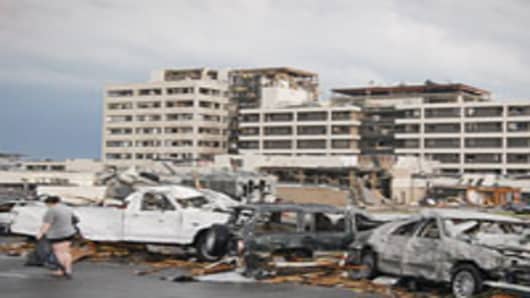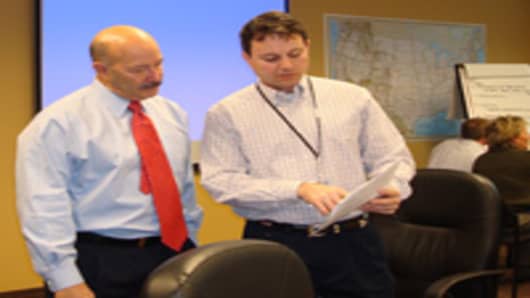Bobby Lewis was watching TV and playing with his granddaughter on a quiet Sunday evening in May when one of his employees at ServiceMaster’s nearby disaster operations center telephoned.
“We just got word a tornado went through Joplin, Missouri,” Lewis recalls the employee telling him.
ServiceMaster, where Lewis is vice president of disaster restoration, is headquartered in Memphis, where 200 of its 1,200 employees man the operations center 24/7.
They monitor different public and private weather-alert services, “police and fire channels, anywhere we can get input on what’s going on,” says Lewis.
ServiceMaster is the parent company of more than 3,000 local franchises, which work day to day doing residential cleanup from burst water mains, rainstorms and fires. But when a natural disaster strikes anywhere in the country, they can be called up to serve, mobilized by the hundreds to respond to catastrophe for days and weeks on end.
It’s a business model loosely shared by several other big disaster cleanup companies including ServPro, Disaster Kleenup Internationaland the Signature Group.
“Within an hour we were ready to move into the area to serve our customers,” says Lewis. “By then we had information from insurance carriers, Google Maps and some paid services we use to get additional visual orientation. “
The monster tornado tore through Joplin, a city of 50,000, killing 120 people, seriously injuring 400 and destroying thousands of homes and businesses. It was the deadliest single U.S. tornado since 1947 and the ninth-deadliest of all time.
“Within four hours we were there, with our people, equipment and banks of lights up in parking lots, so they could do rescue and recovery," recalls Lewis.
Similarly, “when we hang up the phone, we pull the trigger," says Ken Melchiorre, a vice president with CH2M Hill , the global engineering firm under contract with FEMA to provide temporary housing and other disaster relief as needed.
More than most, the disaster restoration business is entirely dependent on Mother Nature. Its extreme revenue volatility is determined by the size and frequency of natural disaster.
Take, for instance, Signature Group, a Gulf-Coast, disaster-relief company based in Port Neches, Texas. In 2005, it had 1,500 people bringing back hospitals and 19 schools in the St. Bernard Parish of New Orleans, revenue topped $230 million.
“That was a unique year, that was the top-out for us,” says Bobby Chiasson, vice president of marketing for Signature Group. “We’ve had $12-million years, $30-million years. It fluctuates a lot.”




